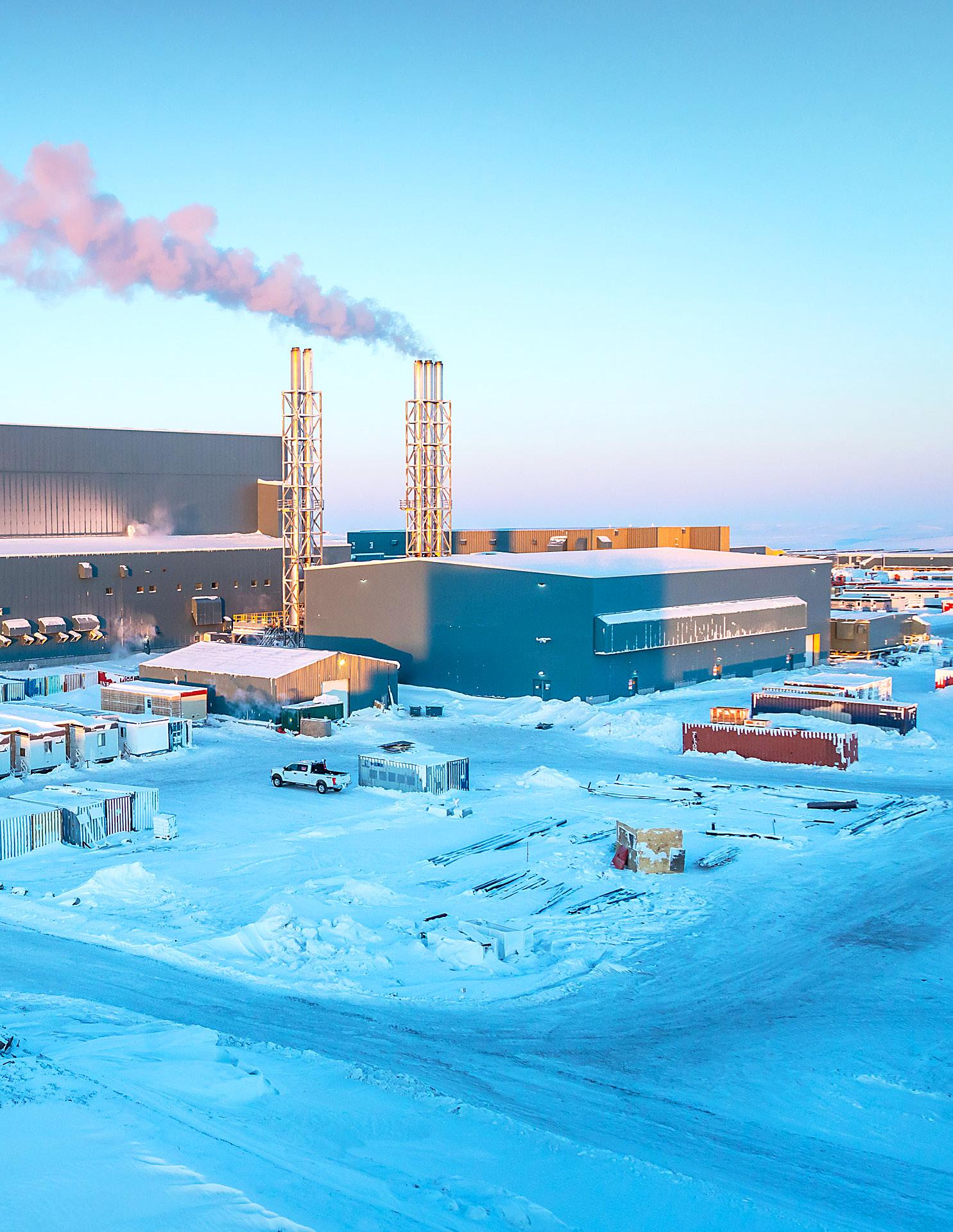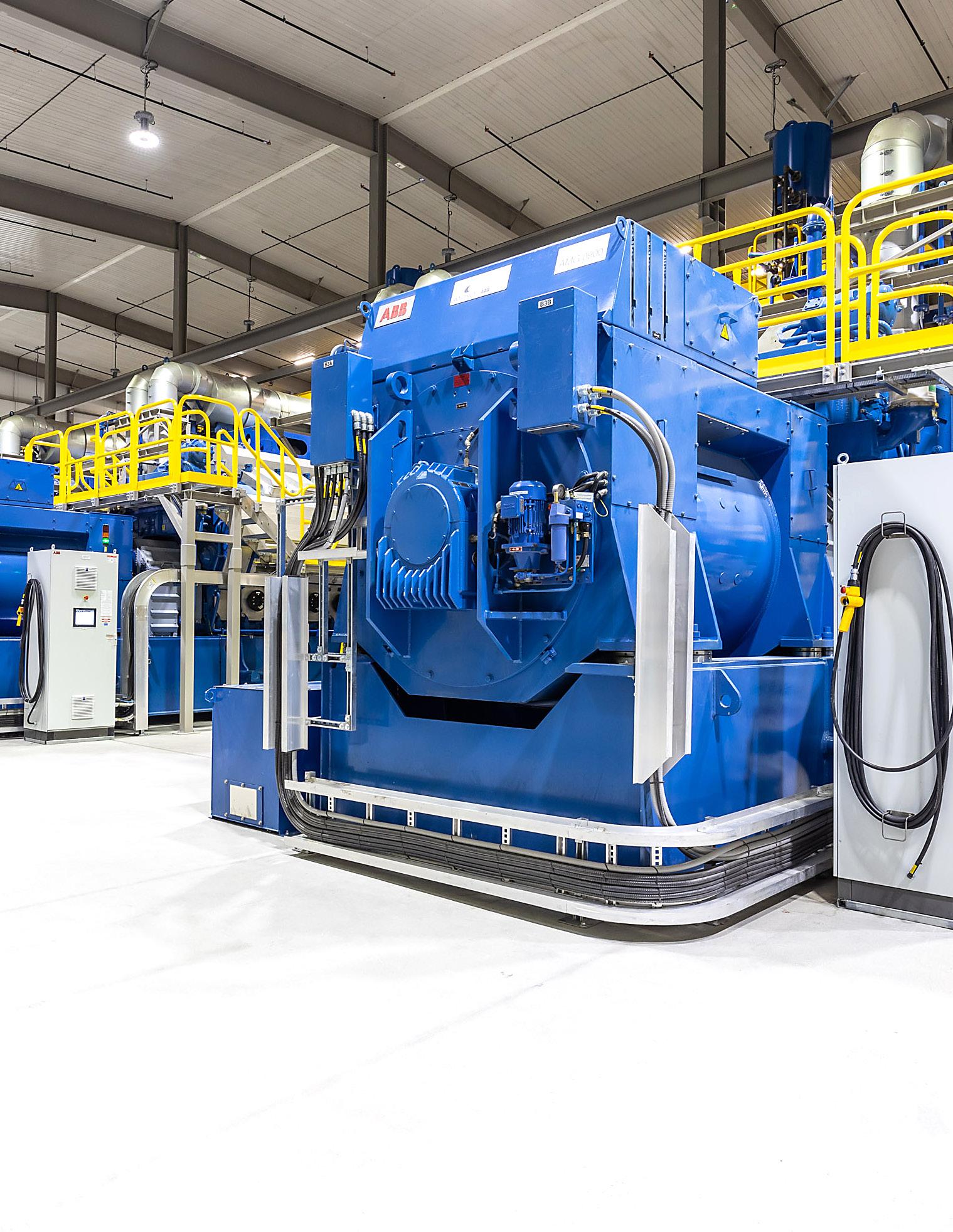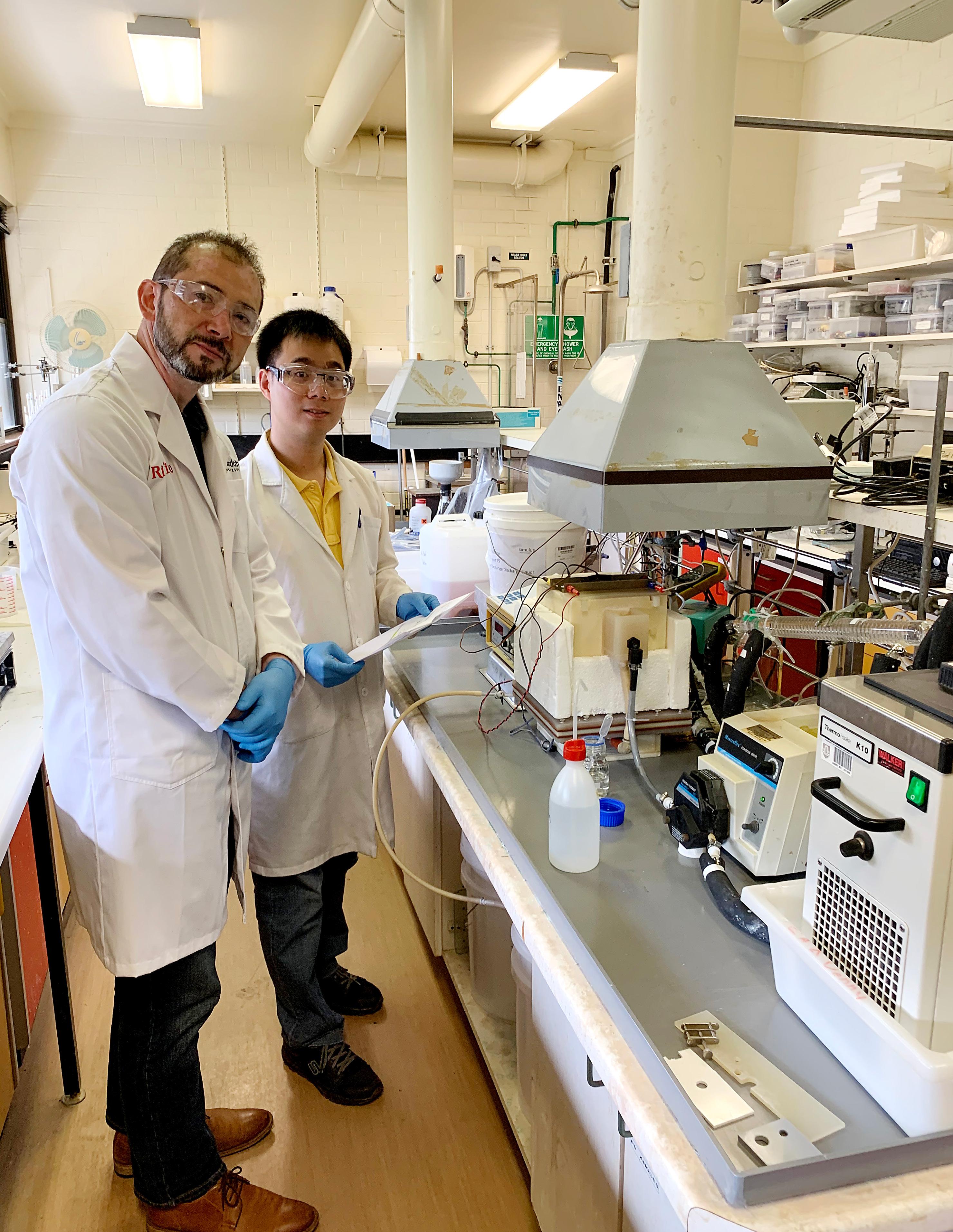
7 minute read
The Dawn of Variable Mining
story
The dawn of variable mining
Advertisement

Photo courtesy of Agnico Eagle
In just a few years, the conversation around greenhouse gas emissions reduction has changed dramatically. Miners have gone from simply looking for cleaner options to power continuous, flat load operations, to rethinking their whole designs and processes to ensure the best use of dynamic green power generation.
It’s a natural evolution: with building solar or wind farms and hybrid power plants on site came knowledge and experience about how these systems work. By now, it has become obvious that renewable energy supply is not constant, and that arguably storage technology is years away from being able to make up for generation gaps, particularly at night. So far, this lack in capacity has been filled by diesel or natural gas generators, but the price of renewables is now so attractive that mining engineers have a strong financial incentive to find a way to use them to their full extent.
This is particularly true for very remote mine sites that have no access to grid electricity, and would require costly development work to either connect to a gas pipeline or bring in road infrastructure for the transport of diesel. Warner Priest, head of emerging technologies at Siemens Australia, explains: “With variable mining, you can now economically mine a resource that was in the past too expensive to mine, because there were no overhead power lines or gas pipeline to service the mine in energy.”
Priest has had various conversations on the topic with mid-sized greenfield mining operators that have good access to renewable resources in Australia. “For about 70% of the time through the year, they will have renewable power available to mine on the operations over a 20-year period. Now, the decision would be to fill that other 30% with energy storage or diesel, or to change their mining operations so that they only operate for 70% of the time and are off for the remaining 30%,” he says.
Changing mentalities

photo courtesy Agnico Eagle
This is a dramatic shift from the traditional mining mentality, where operations run 24 hours a day, 365 days a year. But it looks like operators are starting to realize that structural changes are a necessary element in the pursuit of cleaner, more efficient mining. Agnico Eagle, for example, embarked on a journey to optimize its use of energy a couple of years ago. This year, it came up with new design principles to orient optimization of its use of energy and reduce its footprint. These include concentrating along the path, electrifying all work, eliminating waste energy, increasing the use of renewables, building a smart energy system, and liberating minerals in an energy efficient way. None of the company’s current sites use renewable power, yet Agnico Eagle believes it will start implementing variable mining principles within the next decade — an impressive change of pace. It has become obvious that renewable energy supply is not constant, and that arguably storage technology is years away from being able to make up for generation gaps, particularly at night
Dominique Beaudry, director of innovation at the firm, explains that there are many step changes to introduce before adopting variable mining. “Before introducing variable mining, we need to significantly reduce our current energy requirements. We think that we could save up to 30% of our energy requirements through better energy management. We need to reach an amount of energy where we think that we can make that transition, and projects such as ore sorting will be a key process for that: removing as much waste as we can before transporting the ore to the mill, and doing more selective mining,” she says.
Additionally, since the concept breaks so much from traditional mining principles, human acceptance may take a while to reach. But Beaudry is confident that following Agnico Eagle’s roadmap is the best way to convince operators of the efficiency of the variable mining model: “We’re going to communicate and involve our people in the decisions. The biggest change will be the human change, but people will follow once they’re convinced that it is feasible because we are taking a step-by-step approach to work with new design principles.”
WARNER PRIEST Head of Emerging Technologies, Siemens Australia
For newcomers in the market, the transition doesn’t always have to be this measured. Element25 is currently developing Australia’s largest onshore manganese resource to supply global battery manufacturers. In order to capture as much value as possible within Australia, the firm plans to extract the manganese from the ore on site, using a process called electrowinning. Manganese is a key element in the global energy transition, so it makes sense to try and produce it in the cleanest way possible. But the real driver behind Element25’s preference for variable processing in its pre-feasibility study is cost. The price of renewables is now so attractive that mining engineers have a strong financial incentive to find a way to use them to their full extent
JUSTIN BROWN Managing Director, Element25
“We started our journey with a pretty traditional base case power solution that revolved around natural gas, because we have a pipeline traversing through our project,” recalls Justin Brown, the company’s managing director. “We discovered that renewable energy is now significantly cheaper than natural gas, so we started looking at using 50% renewable energy and 50% natural gas, and the overall cost of the project was brought down because of that. But this is just using a traditional flat load profile; the really exciting thing is thinking we use a variable philosophy to capture more of that dynamic energy provided by wind and solar.”
Element25 is now doing experimental work to determine how dynamic it can make its operations, but Brown says early results are encouraging. “Aspirationally, we can see a future where we get to 80% or 90% renewable penetration,” he points out.
New value perceptions

Manganese Test Laboratory - Element 25
Can the same productivity be achieved through variable mining as with traditional flat load profiles? “Yes,” says Priest. “They’ve just got to increase the size of their mine processing and energy generation. This is a little bit tricky because they’ve got to balance the cost of the extra assets they have to put in with the cost savings they get from not having to use diesel or gas for the 30% of the time renewable power is unavailable.” In this calculation, life of mine is, of course, a determining factor. Priest estimates that the capex required to build a greenfield variable mine cannot be amortized in less than 10 to 15 years. “It can be very expensive from a capex point of view to set these systems up: you have to build wind, solar, potentially diesel generation and batteries, but it is much lower-cost on the opex side. If you’re mining for 20 or 30 years, it will be the lowest form of power generation for your mine,” he adds. There’s an urgent need for miners to start collecting and interpreting data about their energy use
But mining and minerals companies can go further in calculating the value of setting up their operations to rely mainly on renewables. Decoupling productivity from power costs is likely to prompt a revolution in the mining world.
Take electrowinning, for example. This is a highly energy-intensive process: about 2 to 3 MWh for copper, 5.5 to 6 MWh for manganese, and as much as double that amount for aluminium, according to Brown. Knowing this, it’s understandable that Australian miners have so far preferred to send their ore to be processed in countries with access to much cheaper electricity. But this is where the high renewable penetration achieved through variable mining processes could tip the balance for the mining sector, prompting companies to add value within countries where grid power is expensive but wind and solar energy is abundant.
At Agnico Eagle, Beaudry suggests that miners may need to change the way they calculate value as they adjust processes to fit dynamic renewable power generation. “We are to give ourselves more flexibility with regards to our production by reducing energy requirements. Depending on the context of our ore deposits, we could increase our production in terms of tonnes by lowering ore cut off grades. Or we could also lower our production in terms of tonnes, but it could be the same or even better in terms of ounces: in that case we would remove fewer tonnes from the mine, but they would be the right tonnes. By doing that, you’re reducing your footprint and cutting waste management requirements. It’s very valuable,” she notes.
Data analysis
But first, there’s an urgent need for miners to start collecting and interpreting data about their energy use. This is something mining majors have been working on for a few years, now resulting in the production of the first climate change or environmental reports by the likes of Rio Tinto, BHP and Anglo American.
It is also part of Agnico Eagle’s roadmap: understanding its energy requirements and the amount of power generated from its power sources in real time, and leveraging a smart analytical software platform to optimize energy distribution on its sites.
At Siemens, Priest recommends gathering this type of data from day one. “To start off in assessing if this is a viable option, you need to do a techno-economic assessment and modelling, almost building a digital twin of your mining and energy operations and working out the technical aspects of doing so and its commercial viability over the mine life. You should build your energy system and mining plant with the view to collect data from all their components from the day you start commissioning. You can then use that intelligence to confirm that any tweaks or changes you make in the digital twin work perfectly before you make them in the actual site,” he says.
The necessary software tools are already available or being developed: ABB, for example, is collaborating with Boliden in Sweden on the creation of a Sustainable Intelligent Mining System (SIMS) which will allow for real-time data collection and process control, application of scenarios on the digital twin and field trials evaluation and exploitation.
It won’t happen tomorrow, it won’t happen in a year, but the variable mining revolution is already underway. Greenfield developers in particular have everything to gain from putting this option on the table now, but even large miners operating brownfield sites should start preparing for the transition.


